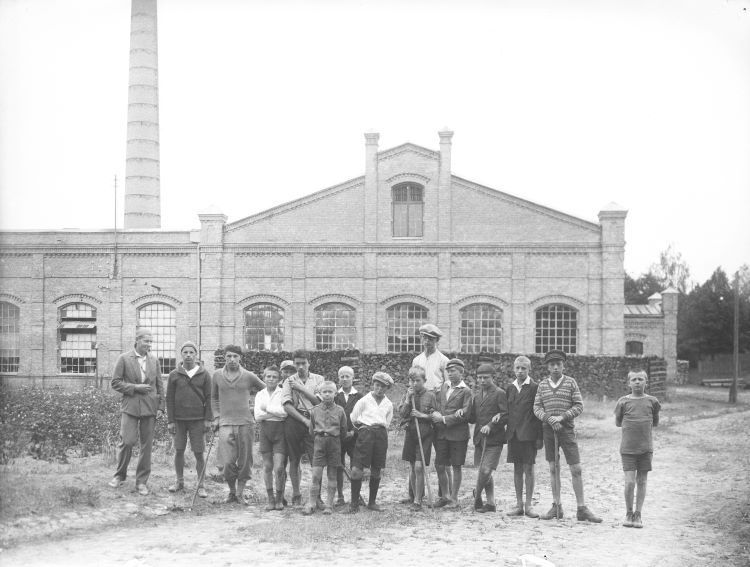About Demography

Boys' camp in Latvia, Skulte parish. 30s of the 20th centuries. Photo author: Jānis Jurjāns. From the collection of Gatis Krūmiņš.
The database contains the most important demographic data on the Baltic States: population in the countries and their regions, urban and rural population, population age and natural increase data, infant mortality and other indicators. Each of the indicators of demographic data has been tried to be reflected in the widest possible range of years. Some of the indicators - for example, the number of births and deaths - can be determined relatively accurately for almost every year during the last century. However, the accuracy of other indicators is not so high, especially the number of inhabitants in regions between census years, where approximate assessments should be used. Since significant territorial changes took place in Lithuania during the Second World War (Vilnius region was regained, Klaipėda county was lost and newly regained), it is much more difficult to try to estimate the population in its regions up to the 1959 census. Such a bold attempt has been made in Latvia, although a certain percentage of error must be allowed, because when summing up the population estimates in the regional section preserved in the archives between the years between the censuses, they do not agree with the total population of Latvia accepted today.
The high geopolitical turbulence since the beginning of the 20th century has significantly affected the population of the Baltics today. The countries have experienced several waves of immigration and emigration, which have changed both the population and the ethnic composition. The Baltic states lost essential human resources in both world wars (spontaneous and organized movement of refugees, repression of the occupying powers and the Holocaust, those mobilized and killed in the armies). Latvia has experienced relatively the largest population fluctuations. Lithuania and Latvia had a larger population in 1914 (on the eve of the First World War) than in 2023.

A group of soldiers during the First World War in Latvia, near Riga and the front line (Ložmetējkalns, May 1917). The author of the photo is unknown, from the collection of Gatis Krūmiņš.
The demographic trends of the Baltic States since the beginning of the 20th century have been significantly different from those of the neighboring Scandinavian countries. In the territory of the Baltic States, the total population in 1900 was 5.7 million, and in 2023 it will be 6.05 million, so the population has increased by 5.2% in 123 years. In terms of population, at the beginning of the 20th century, in the Scandinavian countries comparable to the Baltic States, the population of Finland, Denmark and Norway was 7.3 million, but in 2023 it was 16.9 million. So, the population of these countries grew 2.3 times in 123 years.
During the period of occupation of the USSR after the Second World War, Latvia and Estonia experienced significant immigration from Russia and other territories of the USSR, because of which the ethnic composition of the population changed. The share of Latvians in Latvia and the share of Estonians in Estonia decreased rapidly. This immigration from the USSR was closely related to two factors: the quality of life in Latvia and Estonia was significantly higher than elsewhere in the USSR (people were looking for a better place to live), and the USSR's efforts to develop industrial production in the Baltics. In terms of quality of life, Lithuania was less attractive for immigration for a long time, and in the 1940s and 1950s, Lithuania had a much more intense military resistance to the occupying power of the USSR. The structure of the society was significantly more agrarian, and the human resources needed for industry could also be obtained in the rural areas of Lithuania.

Collective (Comsomol) wedding in Latvia, Penkule parish. 60s of the 20th centuries. Source: Penkule library.
Along with the restoration of independence and the accession of the Baltic States to the European Union (2004), there was a large population emigration to richer European countries, which intensified after the 2008 financial and economic crisis. All the Central European countries, which were under the influence of the USSR for a long time and thus their development was hindered, were subject to such a process. The main reason for emigrating to the West (in the case of Estonia to Finland) was the opportunity to find a better-paid job.
In the regional aspect, it is necessary to mention the population changes in the Latgale region of Latvia. If in the 20s-30s of the 20th century Latgale was the most densely populated region of Latvia with rapid growth, then in the 21st century it is the least populated. After the end of the Second World War, a rapid outflow of residents from Latgale began, which has not ended even today.
The wars of the 20th century had a negative impact on the age structure of the population of the Baltic States - there have been proportionally fewer men than women for a long time. Global medical developments had a positive impact on the decline of infant mortality, while unhealthy lifestyle habits hindered the faster increase in life expectancy when compared to neighboring Scandinavian countries and other developed regions of the world. The difference in life expectancy between men and women in the Baltics is one of the largest in Europe, the largest in the European Union. The current low birth rate suggests that population growth or even stabilization in the future will only be possible with the help of immigration.
Vidzeme University of Applied Sciences
Cesu street 4, Terbatas street 10, Valmiera, LV-4201, Latvia
CONTACTS : [email protected]


